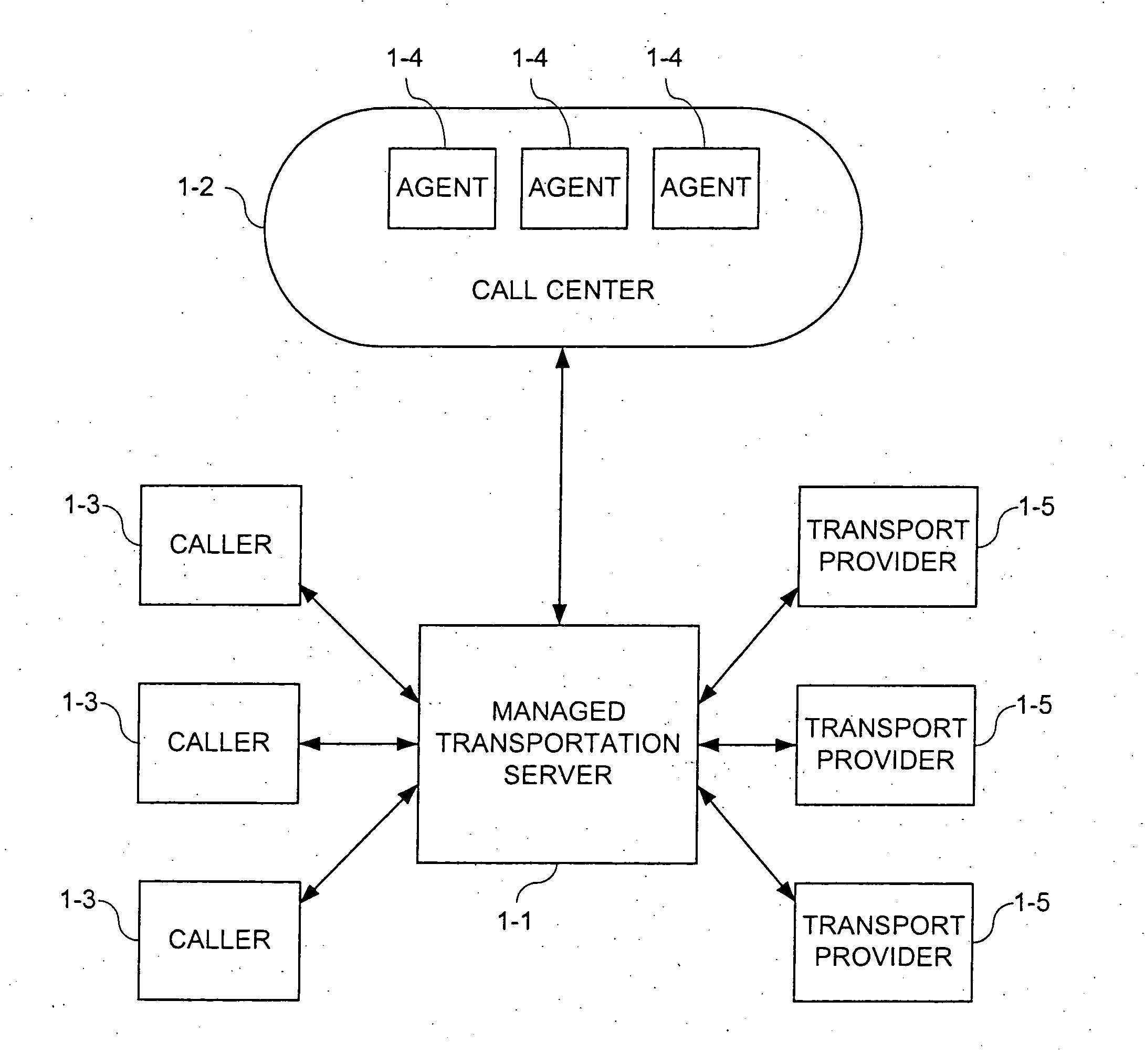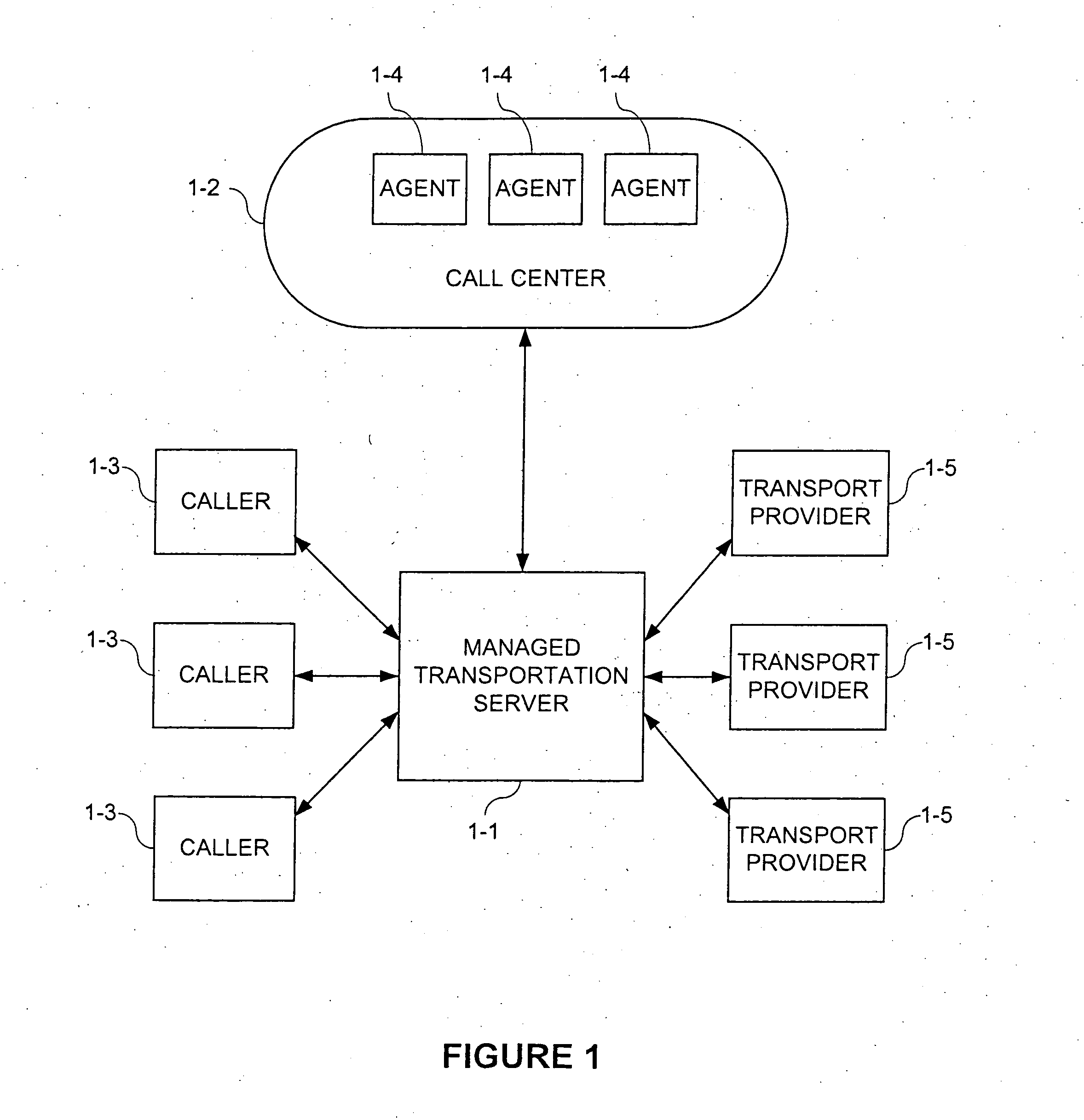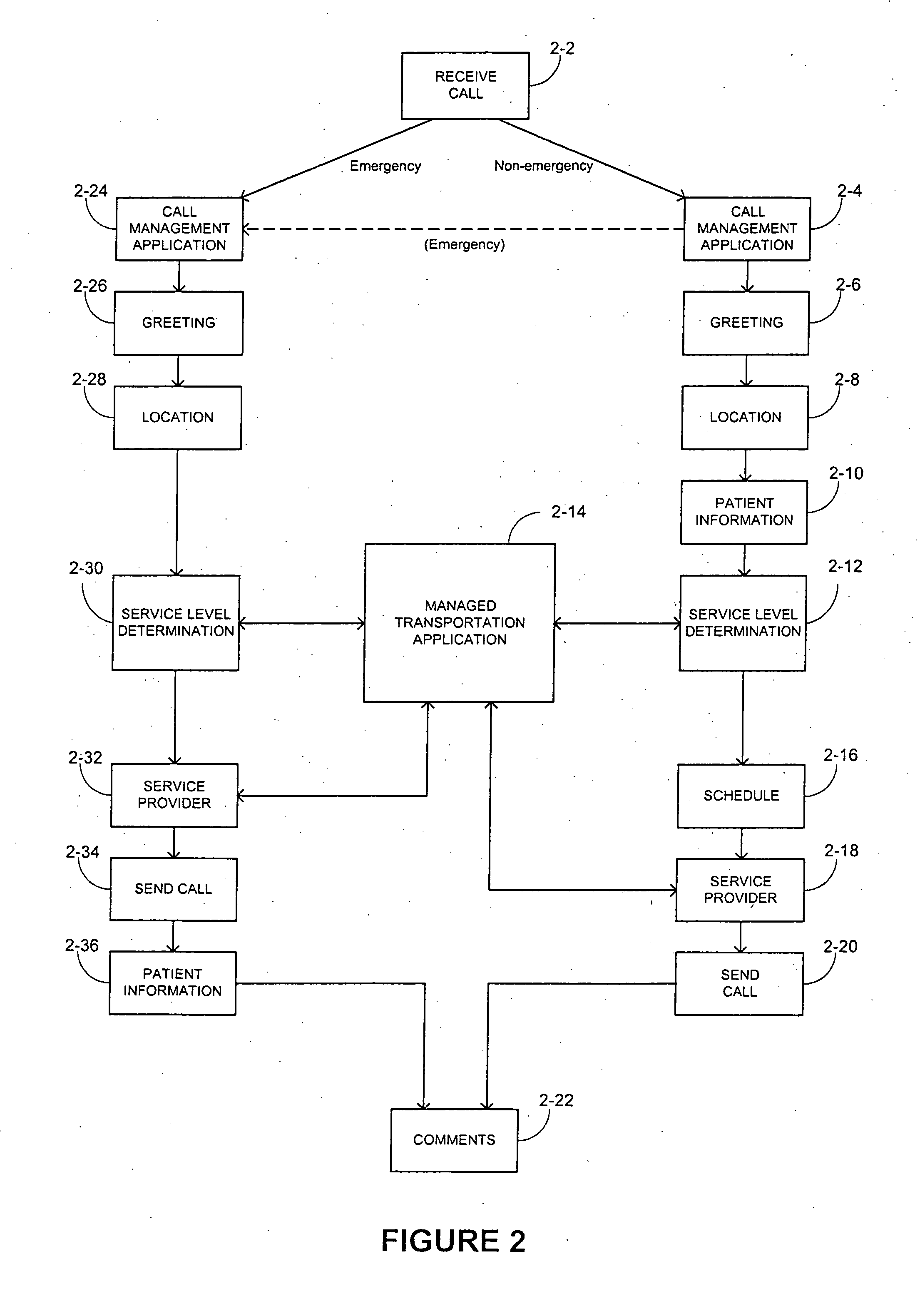System and method for managing requests for medical transportation
a technology for medical transportation and requests, applied in the field of systems and methods for managing requests for medical transportation, can solve the problems of reducing the quality of service, prone to errors in agent decisions, and reducing the utilization rate of scarce and costly resources, so as to improve the utilization rate of medical transportation resources, and without degrading the quality of service
- Summary
- Abstract
- Description
- Claims
- Application Information
AI Technical Summary
Benefits of technology
Problems solved by technology
Method used
Image
Examples
Embodiment Construction
In the following description, details of a preferred embodiment of the present invention are set forth. However, it will be apparent to those of ordinary skill in the art that alternative embodiments of the invention may be implemented using only some of the features of the preferred embodiment. While various operations may be described herein in a particular order and as discrete tasks, the order of description should not be construed to imply that the tasks involved in those operations must be performed in the order in which they are presented or that those tasks must be performed discretely. Further, in some instances, well known features are omitted or simplified in order not to obscure description of the invention. In this description, the use of phrases such as “an embodiment,”“embodiments,”“preferred embodiments” and so forth do not necessarily refer to the same embodiment or all embodiments, although they may.
System Overview
FIG. 1 shows a generalized diagram of a managed...
PUM
 Login to View More
Login to View More Abstract
Description
Claims
Application Information
 Login to View More
Login to View More - R&D
- Intellectual Property
- Life Sciences
- Materials
- Tech Scout
- Unparalleled Data Quality
- Higher Quality Content
- 60% Fewer Hallucinations
Browse by: Latest US Patents, China's latest patents, Technical Efficacy Thesaurus, Application Domain, Technology Topic, Popular Technical Reports.
© 2025 PatSnap. All rights reserved.Legal|Privacy policy|Modern Slavery Act Transparency Statement|Sitemap|About US| Contact US: help@patsnap.com



